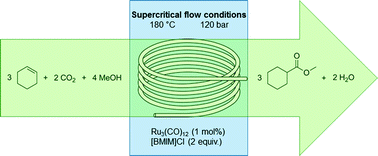
A continuous-flow process for the preparation of m-nitrothioanisole has been set up. The starting material m-nitroaniline
was diazotized to give diazonium chloride, followed by azo-coupling
with sodium thiomethoxide to give
1-(methylthio)-2-(3-nitrophenyl)diazene, then dediazoniated to gain m-nitrothioanisole
in high yield. The continuous-flow process minimized accumulation of
the energetic intermediate diazonium salt and has a better capacity for
adapting large-scale production. A solvent was introduced in the
azo-coupling section to create a biphasic flow system. Side products
were inhibited eminently in this flow process.
Continuous-Flow Process for the Synthesis of m-Nitrothioanisole
† National
Engineering Research Center for Process Development of Active Pharmaceutical
Ingredients, Collaborative Innovation Center of Yangtze River Delta
Region Green Pharmaceuticals, Zhejiang University
of Technology, Hangzhou 310014, P. R. China
‡ Key
Laboratory for Green Pharmaceutical Technologies and Related Equipment
of Ministry of Education, College of Pharmaceutical Sciences, Zhejiang University of Technology, Hangzhou 310014, P. R. China
Org. Process Res. Dev., Article ASAP
DOI: 10.1021/acs.oprd.6b00023
Publication Date (Web): March 24, 2016
Copyright © 2016 American Chemical Society
*Tel.: (+86)57188320899. E-mail: pharmlab@zjut.edu.cn.
////////






